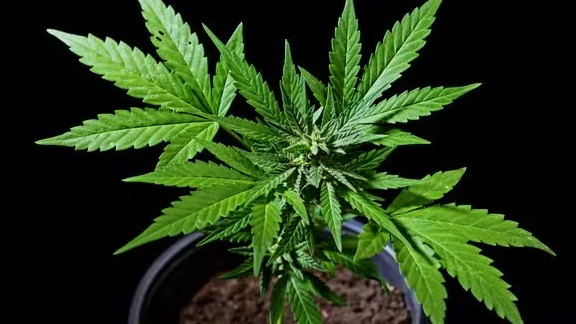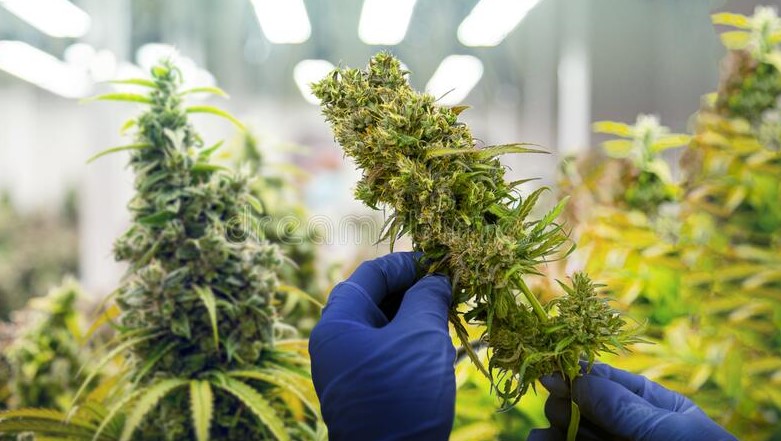
You’ve undoubtedly heard the terms “sativa” and “indica” while browsing the internet. However, did you know that there is a third kind of cannabis plant? Cannabis ruderalis is a lesser-known relative of these more well-known strains. It’s not something most dispensaries carry. Buy best weed with weed delivery Canada.
However, if you enjoy hybrids or cultivate marijuana, you may have come into contact with cannabis ruderalis without even knowing it. It’s a strange plant with a high THC percentage that few people have heard of. It does, however, offer some intriguing advantages that have made it popular among breeders throughout the world.

What Is Cannabis Ruderalis? An Overview
There’s a dispute in the scientific community as to whether cannabis sativa, indica, and ruderalis are separate species or three subspecies of the same plant. Cannabis ruderalis is unique from its more well-known relatives for a variety of reasons.
Cannabis ruderalis is a weed in every respect.
The word ruderalis is derived from the Latin term rudus, which means “rubble.” Plants with the word “ruderalis” in their names are more likely to thrive in the wild regardless of human activity or other disturbances to their habitats. This implies that cannabis ruderalis is a weed in every respect of the word. It’s easy to picture this plant springing up on barren rock formations or even beside a busy highway.
Cannabis ruderalis was first identified by a botanist named Janischevsky in 1924. It was discovered far later than its sativa and indica relatives. The plant’s birthplace is unknown. However, it may have evolved from cultivated hemp plants that escaped and spread across the earth over time.
The cultivar’s origin is unknown, although it may be native to the vast Russian region. Ruderalis, on the other hand, is most likely descended from Central Asian landrace strains and can also be found in Asia and Europe. Parts of Canada have reported seeing the plant develop.
The Self-Raising Plant
Cannabis ruderalis is a short, thick-stemmed plant with broad, pale green leaves and buds that are tiny yet well formed.
It has a low THC concentration compared to sativa and indica strains. It also contains significant amounts of CBD, which could suggest some therapeutic effects. Its genetics might be found somewhere between industrial hemp and marijuana used for medicinal or recreational purposes.
The ability of ruderalis to flower immediately without the need for adjustments in light/dark cycle is what sets it apart. Experienced marijuana cultivators will be familiar with the requirement for 12 hours of darkness a day from sativa and indica strains in order to flower. Ruderalis, on the other hand, blossoms as soon as its plant matures, regardless of how much sunshine it receives.
Because of its distinct characteristic, cannabis ruderalis has become a popular cultivar among marijuana breeders throughout the world. Breeders have been able to develop hybrids with a far shorter flowering time than usual because to ruderalis’ autoflowering potential. As a result, they can produce more harvests each year as a result of this.
What Is the Difference Between Ruderalis, Sativa, and Indica Strains?
Cannabis strains come from different locations and are therefore adapted to grow in distinct ways. As a result, they’ve developed unique growth habits over time.
Because cannabis ruderalis originated in a region with long, cold winters, it has developed as a tiny and fast-growing plant. Its autoflowering capabilities enable it to finish blooming during the summer, despite the extended day lengths found in northern regions throughout the year.
Indica varieties, on the other hand, grow more slowly than sativas and take longer to mature. Indicas are also adapted to colder climates since they come from mountainous regions near the Himalayas’ foothills. As a result, they must flower quickly before winter arrives. Indicas are characterized by short stature and stockiness, as well as broad leaves. Cannabis ruderalis plants, on the other hand, produce very low amounts of THC. Indica strains are known for their heavy buds loaded with cannabinoid-rich resin.
Sativa strains are indigenous to warm, tropical climates. As a result, unlike their relatives, they can afford to spent far longer blooming. Sativa plants grow substantially taller than ruderalis and indicas due to this. They also have lengthy, thin leaves and fluffy buds. When cultivated outside in spacious conditions, they may create a stunning sight.
Different Looks, Differing Effects?
There is a widespread notion that sativa and indica strains have distinct THC/CBD amounts, which means they produce different effects. Sativas are supposed to provide a more cerebral, uplifting high. Indicas, on the other hand, are considered to be more sedating and give a strong “body high.”
Many modern cannabis strains have been engineered to have a exceptionally large THC concentration, regardless of their origins. Indicas, on the other hand, tend to have somewhat more CBD. Indica-derived strains are specifically bred for high quantities of CBD, and these are generally indica types.
Cannabis ruderalis is low in THC but high in CBD, making it unlikely to cause intoxication despite the fact that it contains a lot of chemical compounds. It may, however, have therapeutic value.

Cannabis Ruderalis and Autoflowering Marijuana Strains
Cannabis ruderalis is normally used in the production of auto-flowering hybrid strains. These plants are recognized for their fast-growing cycles and ability to flower independently of changes in light/dark cycle.
The following are some examples of popular auto-flowering strains:
Amnesia Haze Automatic
This sativa-dominant strain has all of the uplifting, energetic features of its namesake, with a shorter flowering time. The popular Amnesia Haze takes up to 12 weeks to mature. In comparison, the auto variety takes less time from seed to harvest. This plant may grow to be as tall as 5 feet and produce between two and five ounces per plant if given enough room.
Royal Dwarf
This autoflowering strain from Royal Queen Seeds was created by crossing cannabis ruderalis with a Skunk variety. This bud has a relaxing yet not overpowering high. Royal Dwarf, despite its sativa ancestry, is a compact plant that is suited to growers with limited time and space. It may be harvested after just 8–9 weeks, and each plant may produce up to 2 oz of buds.
Northern Lights Automatic
The Northern Lights strain is a predominantly indica variety that is known for its soothing, euphoric effects. The auto-flowering variety grows to maturity in less than 11 weeks. When cultivated outside, it produces up to 7 oz per plant, or 19 oz per square meter indoors.
White Widow Automatic
Another classic strain has gotten the autoflowering treatment. White Widow is an indica-dominant variety that is well-known for its relaxing effects and ability to relieve pain and anxiety. You can grow White Widow Automatic from seed to harvest in 75 days, producing 6–8 ounces per plant.
Easy Bud
The name of this indica-dominant strain says it all. Easy Bud is a simple plant to cultivate, with an 8–9 week flowering period. This is the ideal strain for novices. It can produce up to 2oz per plant outdoors and 11 oz per square meter indoors. Its calming, euphoric, and even erotogenic effects may make you feel relaxed and happy.
Final Thoughts on Cannabis Ruderalis
Cannabis ruderalis has a low THC concentration and isn’t particularly attractive in appearance. Nonetheless, despite its lack of potency and beauty, this unusual plant has a lot to offer. You may utilize it to make hybrids that are ideal for small-space or time-constrained growers because to its autoflowering qualities and compact size.
It’s also worth noting that because of its autoflowering qualities and compact size, it may be used to produce excellent mongrels.
Cannabis ruderalis is a low-THC hemp cultivar that has been called “tetrahydrocannabinol number 1” and is often neglected because of its low THC content. Because it is such an underutilized plant, you may not have come across it before today. However, the growing popularity of autoflower strains ensures that you will hear more about it in the future.